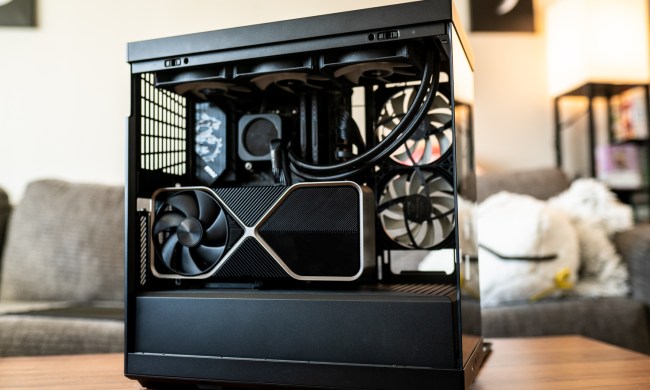After months of massive graphics cards like the RTX 4090, Nvidia is finally slimming things down at its GPU Technology Conference (GTC). The RTX 4000 SFF delivers the Ada Lovelace architecture in a tiny package, but you probably won’t find it sitting among the best graphics cards.
Although the RTX 4000 SFF uses the same architecture in gaming GPUs like the RTX 4080, it’s built for a very different purpose. It uses Nvidia enterprise drivers, and it’s made to power computer-aided design (CAD), graphics design, AI applications, and software development, according to Nvidia. The card takes up two slots and includes a low-profile bracket for cases like the Hyte Y40.
For specs, it includes 20GB of GDDR6 memory on a 160-bit bus, as well as 6,144 CUDA cores, 192 Tensor cores, and 48 ray tracing cores. Those core specs are slightly lower than the RTX 4070 Ti, but you shouldn’t expect the RTX 4000 SFF to be nearly as powerful. It has solid specs, but it’s limited to only 70 watts of power due to its small form factor nature.
Although the RTX 4000 SFF fills a niche for gamers, it isn’t a great buy. Nvidia says PNY and Ryoyo Electro will start selling the GPU in April for $1,250, and showcasing it as a GPU built for professional applications.
Nvidia is also bringing the Ada Lovelace architecture to laptop creators. We’ve had our first taste of RTX 40-series GPUs in machines like the Asus ROG Zephyrus M16, but Nvidia’s new range is built for creators, not gamers.
The flagship RTX 5000 comes with 16GB of GDDR6 memory, along with 9,728 CUDA cores. Down the stack, both the RTX 4000 and RTX 3500 come with 12GB of GDDR6 memory, but the RTX 4000 features 7,424 CUDA cores, while the RTX 3500 is packed with 5,120. Below those are the RTX 3000 and RTX 2000 with 4,608 and 3,072 CUDA cores, respectively. Both come with 8GB of GDDR6 memory.
Nvidia didn’t point to any specific models, but it said buyers can expect to see workstations packing the new Ada GPUs from HP, Lenovo, and others starting this month. Again, these GPUs use Nvidia’s Studio drivers and are built for professional applications, so expect workstations to cost a premium over gaming-focused machines.




